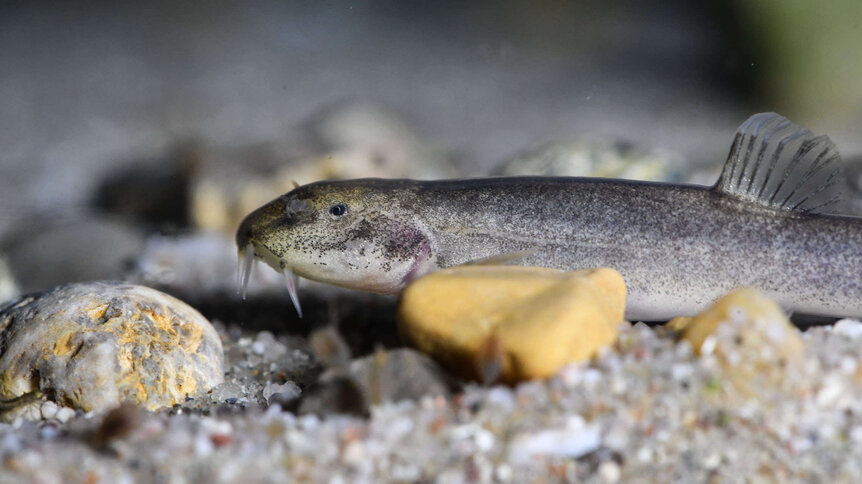Create a free profile to get unlimited access to exclusive videos, sweepstakes, and more!
Some creatures can actually breathe through their intestines — could we?

Most creatures with lungs use their nostrils and mouth for breathing. If oxygen is scarce, they will probably die of hypoxia — unless they can breathe through their intestines.
It sounds like an adaptation for living on an alien planet. In low-oxygen environments, aquatic creatures with lungs can activate intestinal breathing to keep themselves alive, but it doesn’t stop there. Some mammals can do it. To find out if this was possible in mammalian species, Takanori Takebe of the Tokyo Medical and Dental University and the Cincinnati Children's Hospital Medical Center put rats, mice, and even pigs through survival tests to see if they had the same superpower.
“I was the person least likely to believe this was possible in mammals even after a year of experiments,” Takebe, who led a study recently published in Cell, tells SYFY WIRE. “But finally, after repeated efficacy in three different species, I am now more convinced than ever that this therapy can be life-saving in hypoxic conditions.”
When the COVID-19 pandemic first emerged, hospitals could not keep up with the need for ventilators and artificial lungs. This proved lethal for too many patients. There might not have been as many casualties if an alternate method of ventilation existed, but back then, nobody knew that mammals were even capable of rectal breathing. Takebe tested his theory by building a specialized ventilation system that would send oxygen through the intestines of mice in an otherwise hypoxic environment. When this system was switched off, the mice survived barely more than 10 minutes.
With intestinal oxygen intake, however, mice were able to stay alive for 50 minutes in what would have otherwise been lethal conditions. That is about five times as long as those unfortunate ones without the ventilation lasted.
The gut cannot replace lungs as the primary mode of breathing, but it can offer a temporary solution. This is most evident in freshwater fish called loaches. They somehow evolved lungs like ours, but live in the water (and sometimes get around with a creepy walk). Some are cave dwellers that venture into dangerously hypoxic environments, and when their bodies sense that oxygen is low, they activate their intestines as accessory breathing organs that keep them going until they reach an area where there is more oxygen. But how do they do this?
“Rectal breathing is extremely unique in several ways,” Takebe says. “There are abundant blood vessels in the intestines, which are connected to air through the rectum. Intestines also have relatively thin mucosa that allows for easy absorption. These features might be able to provide a premise to breathe, which is why we believe an enema can deliver drugs and nutrients efficiently.”
Mice, rats, and pigs that Takebe gave EVA (enteral ventilation via anus) in the lab exhibited the benefits of rectal breathing when it was not possible to take oxygen in through their lungs. However, we can’t exactly modify the human body to do this on its own, and a rectal ventilation system cannot be used on humans because it would be too abrasive. This is why Takebe and his team came up with the solution of an enema that uses oxygenated perfluorochemicals. These types of chemicals, also known as PFCs, are highly stable and hydrophobic, so they will radically change their structure or absorb excess water in the body. They have been used intravenously before.
Testing enemas on rodents and pigs had promising results. When the animals were exposed to non-lethal hypoxic conditions, those that received liquid ventilation could walk farther than the others. The results were more visible in pigs. Because pigs are not covered in thick fur like mice or rats, they had started to look sickly and grayish without oxygen, and the effects of the enema made their skin appear much healthier. The warmth also returned to their bodies. There were also no side effects, more reason for Takebe to believe that this method is promising for human treatment in the future.
“Perfluorochemcials have an extremely high capacity for carrying oxygen, surfactant-like features, and act as an interface between gases and lipids, much like a cellular membrane,” he says. “These will make intestines suited for breathing. Also PFC has been used in clinics in many occasions that proved to be tolerable and safe.”



























